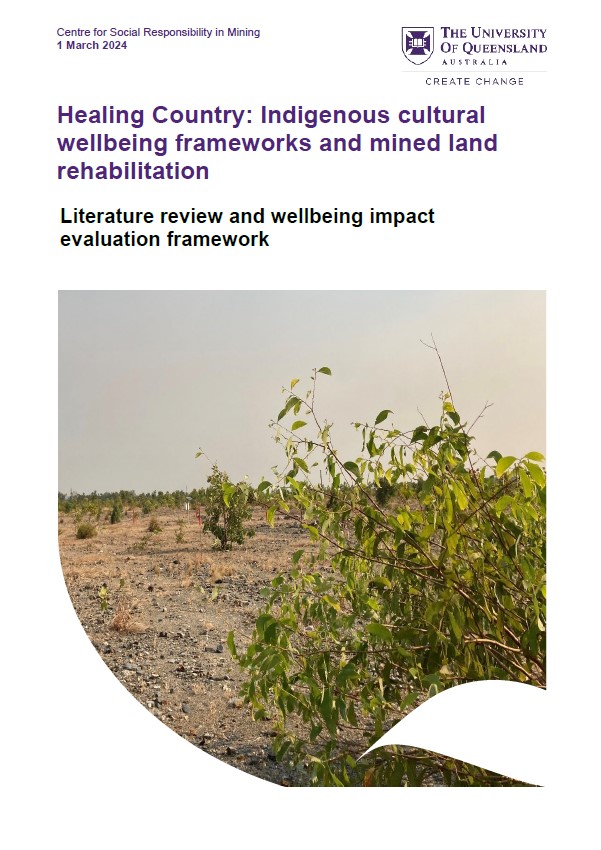Healing Country: Indigenous cultural wellbeing indicators and mined land rehabilitation: literature review and wellbeing impact evaluation framework
This review lays the groundwork for the development of a culturally responsive wellbeing impact evaluation framework to support ERA in monitoring the effects of mined land rehabilitation on Indigenous wellbeing—specifically that of the Mirarr people. By drawing on a global body of literature, particularly from post-colonial contexts such as Canada and Aotearoa New Zealand, the review identifies key insights and approaches that can inform the creation of meaningful, Indigenous-led indicators. While existing qualitative methods—such as those employed by Murray Garde and the Gundjeihmi Aboriginal Corporation—offer valuable insights into Mirarr perceptions of change, there remains a significant gap in systematic, quantitative measures. Addressing this gap requires not only the identification of culturally meaningful indicators, but also the co-design of ongoing monitoring processes that are led and endorsed by the Mirarr themselves. Ultimately, the rehabilitation of the Ranger Uranium Mine presents a unique opportunity to support cultural reconnection, restore wellbeing, and foster healing—of people, land, and relationships. This review offers a starting point and inspiration for that journey, with the recognition that final frameworks must be grounded in local knowledge, cultural authority, and Mirarr leadership.
Language: English
Region: Global
Type: Report
CITATION
Parmenter, Joni and Holcombe, Sarah. Healing Country: Indigenous cultural wellbeing indicators and mined land rehabilitation: literature review and wellbeing impact evaluation framework (2025) Research Report, Centre for Social Responsibility in Mining, the University of Queensland, Brisbane.

